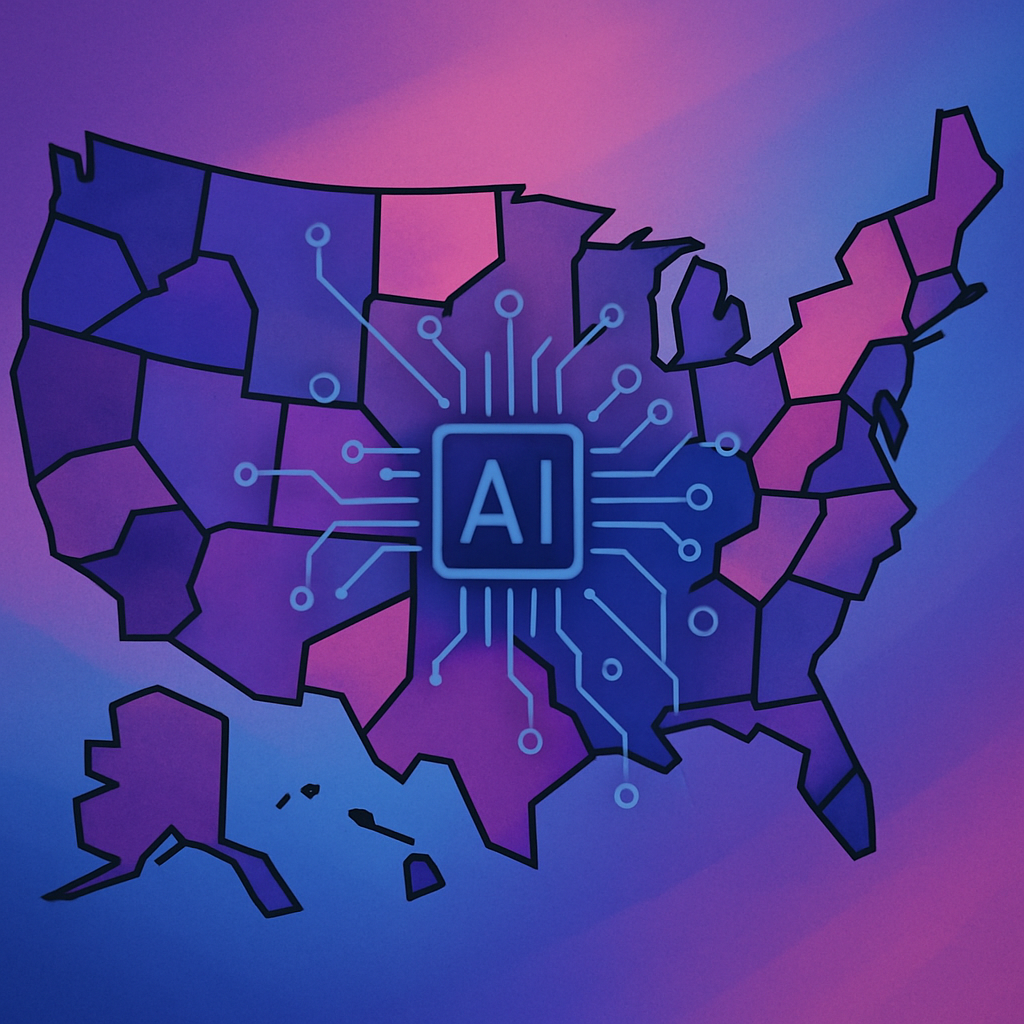Key Takeaways
- Federal efforts to create unified AI regulation have stalled, leaving states free to set their own rules.
- The Senate’s rejection of a federal moratorium cemented a future of fragmented, state-level AI oversight.
- States like California and Texas are pursuing very different governance models, from ethical audits to mandatory red teaming.
- This divergence creates major compliance challenges for enterprises deploying AI across jurisdictions.
- Cranium provides centralized visibility, documentation, and enforcement—so organizations can govern AI consistently in a fractured landscape.
The Federal Vacuum: No Single Path Forward
As generative AI adoption accelerates, the need for governance is clear—but the path forward is fractured. This summer, the U.S. Senate rejected a proposal to ban state-level AI regulations for the next decade, effectively greenlighting a future where dozens of competing frameworks could shape how artificial intelligence is governed.
“The amendment to block states from regulating AI is dead for now,” reported TIME Magazine in July 2025. “This is a serious blow to Big Tech and a win for state-level policymaking.” With no federal standard in sight, U.S. enterprises now face the daunting task of managing AI compliance across a regulatory patchwork that is only getting more complex.
A Fractured AI Future: California ≠ Texas ≠ Everyone Else
The breakdown of a federal framework has opened the door for states to take the lead—and no two approaches look the same. California is focusing on ethical oversight, calling for regulation of high-risk systems, fairness audits, and algorithmic transparency. Texas, meanwhile, passed the Responsible AI Governance Act, effective in 2026, which mandates documentation, red teaming, and self-attestation of compliance.
Other states are following suit with their own priorities. New York, Illinois, and Washington are drafting laws that span everything from algorithmic bias to procurement rules. The practical effect is stark: an AI model that’s legal in Texas might need to be reconfigured for California—inside the very same enterprise.
What’s New: The Patchwork Is Getting Worse
Since July 2025, the divergence has only deepened. In a nearly unanimous 99–1 vote, the Senate struck down the moratorium that would have blocked state-level regulation. By mid-year, more than 260 AI-related bills had been introduced across state legislatures, with at least 22 signed into law.
Some examples show just how varied these laws have become. Montana passed HB 178, prohibiting government agencies from using AI for surveillance, manipulation, or discrimination and requiring human review of AI-driven decisions. Texas enacted SB 20, criminalizing the creation or distribution of AI-generated child sexual content, with severe penalties attached. And beyond new laws, state attorneys general are stepping up enforcement using existing consumer protection and discrimination statutes, putting companies on notice that they’ll “answer for it” if AI harms children or consumers.
The result is a compliance landscape that is multiplying, inconsistent, and increasingly high-stakes.
The Enterprise Risk: Compliance Chaos at Scale
For enterprises deploying AI across multiple states, decentralization translates into operational chaos. Documentation standards vary from state to state. The same AI system may be subject to redundant audit requirements. Vendors in your supply chain may comply with one set of laws but fall short in another. And innovation slows as teams retrofit models for every new jurisdiction.
This isn’t just an administrative burden—it’s a growing source of legal exposure, reputational risk, and lost scalability.
What Enterprises Need to Do Now
In the absence of a federal framework, enterprises need governance programs that are portable, provable, and adaptable. That means discovering all AI systems in use (including shadow AI), generating standardized documentation like AI Bills of Materials and risk profiles, red-teaming models for safety and adversarial resilience, mapping requirements to evolving laws, and ensuring policies are enforced consistently across both internal and vendor AI systems.
How Cranium Solves Governance in a Fragmented Landscape
Cranium was built to help enterprises stay ahead of fractured oversight. The platform enables teams to discover AI systems with CodeSensor and DetectAI, document them with autogenerated AI Cards and AutoAttest scores, and test them using Arena, our red-teaming engine aligned to MITRE ATLAS, OWASP, and our proprietary adversarial libraries. Shield then applies and verifies fixes automatically, closing gaps before they become liabilities.
Just as importantly, Cranium continuously tracks evolving global and state-level frameworks—from the NIST AI RMF and EU AI Act to Texas’s Responsible AI Governance Act and California’s ethical AI guidelines—so your governance stays current no matter where you operate.
Closing Thought
The U.S. has chosen a path of decentralized oversight. For enterprises, that means compliance obligations will only grow more complex. The only sustainable strategy is to embed governance as a continuous, adaptive, and automated capability. Cranium ensures you can meet any standard, federal or state, without losing visibility, consistency, or control.


